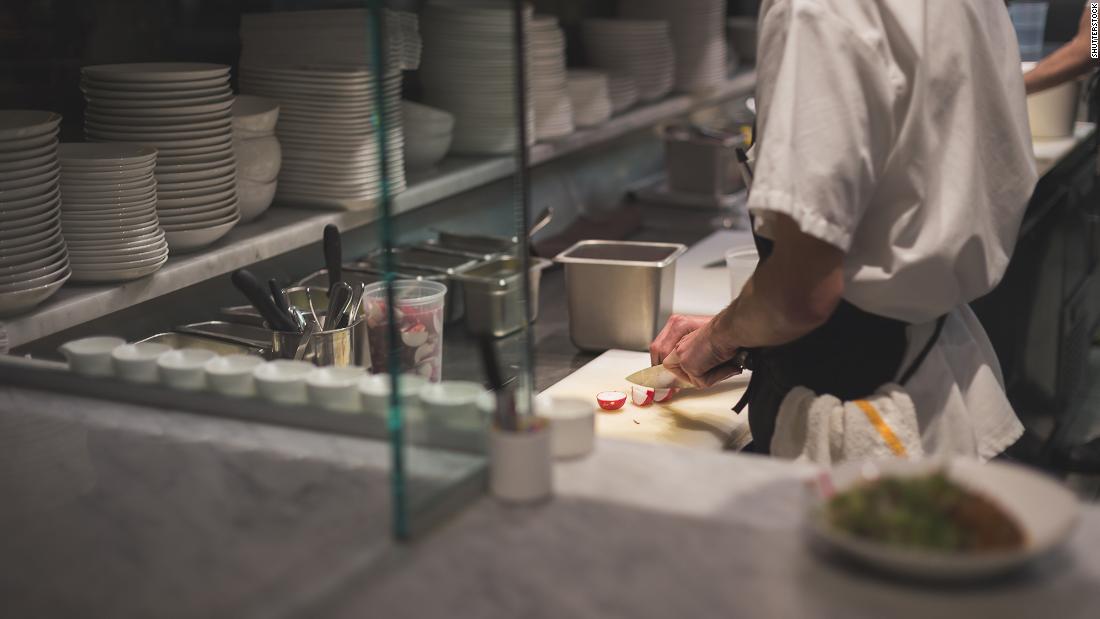‘We’ve never experienced the issues that we have now,’ one restaurant manager says. This is what it’s like for industry workers right now.
Some are planning to stick it out, while others wonder if it’s time for them to exit the industry themselves.
People quitting in the middle of their shifts
Joshuah Morton, 36, has worked as a server at a Cheddar’s Scratch Kitchen in Phoenix, Arizona for about four years. Morton is diabetic, and has a four-year-old son with an immune deficiency. When the pandemic hit, he stopped working, fearing for their health. But by October he was ready to return to work.
“Sitting at home all the time was getting depressing,” he said. And of course, the money was an incentive.
Back then, Morton noticed that the restaurant was having a had time bringing employees back. Once it started bringing new people on board, many of those caved under the pressure.
“People are just walking out in the middle of shifts,” Morton said. “[Hostesses who] seat the tables, the dishwashers, the bussers … they’ll walk out,” he said.
Morton understands why people might quit. After waiting to be seated, customers arrive at their tables “already angry, already wanting to complain about things,” he said. A few weeks ago one employee started to cry because a customer was so mean to her.
On top of all that, there are for more takeout orders than there used to be. “It’s almost like we’re running double the restaurant, comparatively, with half the staff.” Darden, the owner of Cheddar’s, did not respond to a request for comment.
Morton has contemplated quitting himself.
“I don’t think there’s any server who hasn’t been tempted to quit,” he said. “Especially right now.”
Serving, bussing and running food
Karen McLaughlin, 58, has been working as a server at Provino’s, an Italian restaurant in Chattanooga, Tennessee for about two years.
Working conditions have been particularly tough recently. Some people get hired and never show up, she said. Others come in and quit after a week. For McLaughlin, that means wearing multiple hats per shift.
On some days “there’s no bussers [and] no food runners, so we have to take the orders, run our own food [and] bus all of our tables,” she said. “Servers have been called to work on the food line, to prep salads, to wash dishes. We come in and just have to fill the holes,” she said.
On some occasions, the current employees aren’t enough. “There was one day half of the kitchen didn’t show up,” she said. “So we had to open an hour later.”
The added responsibility means servers are spending less time with customers — and as a result, earning less in tips. “If you’re having to do other things … then you make less.” McLaughlin said.
John Miles, who has been the general manager at Provino’s for about 36 years, said that when employees take on other roles their pay is adjusted so that they make as much as they would normally.
Miles described the current environment as very difficult. “We’ve never experienced the issues that we have now, like not having enough employees,” he said.
Of the current employees, “I asked everyone to do their best,” he said. “And some of them have gone beyond that.”
McLaughlin has been working in restaurants for about eight years — she calls it her “pre-retirement plan,” after working in the telecommunications industry for decades. The flexibility of her restaurant job means she can spend more time with her grandson. Generally, “I thoroughly enjoy what I do,” she said. “Except for this year.”
Still, she expects things to turn around eventually, and she plans to stay in restaurants. But she can see why, for younger employees with less experience, the job is unappealing. “It’s harder work than it used to be,” she said. “So they’re coming into something [where] they can’t see that it’s going to get better at some point.”
Customers who don’t get it
Customers at the Richmond, Virginia, Asian fusion restaurant where Kat Combs, 18, works are generally nice, she said. But since reopening, some have behaved poorly.
“One of our first nights of reopening, some guy came to the bar and yelled at our manager. [He said] ‘you need to hire more staff,’ as if she could solve that problem right then, right there,” she said.
Some customers get frustrated when they have to wait for a table, even though many tables are unoccupied. They don’t understand that the restaurant doesn’t have enough staff to serve them or cook their food, Combs said.
“I try to explain and most of the time, they’re understanding,” Combs added. But sometimes, she said, they don’t really care what she has to say. Combs will leave her job at the end of the summer when she enters her sophomore year at college. There, she’ll likely look for an on-campus job.
Ingrid Moody, 56, has been working at a steakhouse in Riverview, Florida since November. She’s also found customers to be more difficult.
These days, some customers are “entitled,” she said. “We have less staff and less kitchen crew and people just don’t seem to care,” she said. “They’re very demanding. And they take it out on your tips.”
Moody is contemplating leaving her job. “If a better opportunity came available in a restaurant right now, I probably would take it,” she said.
![]()






